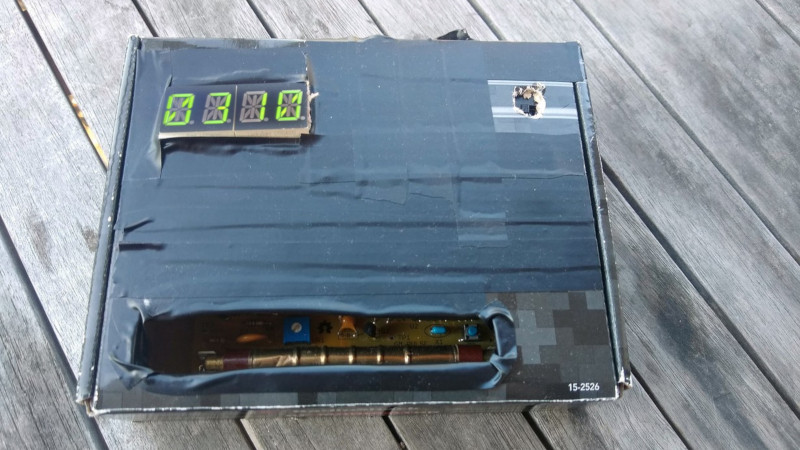Hackers often have broad interests across the sciences, of which nuclear topics are no exception. The Geiger counter remains a popular build, and could be a handy tool to have in a time of rising tensions between nuclear powers. [Leonora Tindall] had tinkered with basic units, but wanted a better idea of actual radiation levels in her area. Thus began the build!
The project began by leveraging the Geiger counter kit from the Mighty Ohm. [Leonora] had built one of these successfully, but wished for a visual readout to supplement the foreboding ticking noises from the device. This was achieved by installing a Metro Mini microcontroller along with a 4-character, 14-segment alphanumeric display. This, along with the cardboard enclosure, makes the build look like a prop from an 80s hacker movie. Very fitting for the Cold War-era technology at work.
By using a pre-built kit and upgrading it with display hardware, [Leonora] now has readings at a glance without having to reinvent the wheel and design her own board from scratch. Of course, if you’re thinking of taking on a more complex build, you might consider a scintillation detector instead.















Why do so many Geiger counter designs use an unregulated 555 for generating the high voltage?
If you have a microcontroller, it’s very easy to use it to drive the transistor of the boost converter, and regulate the output voltage. Saves a lot of energy (and some components).
Example here: https://uhrheber.wordpress.com/2011/04/28/a-usb-powered-geiger-counter-for-the-z2-and-other-computers/
see this discussion for more details https://electronics.stackexchange.com/questions/18441/using-microcontroller-as-oscillator-for-high-voltage-power-suppy
What about reliability? If a microcontroller crashes at a wrong moment you get a short circuit between power rail and ground. Will watchdog act fast enough to prevent smoke? Will it work at all this close to high voltage and a source of electromagnetic pulses?
just needs a pull-down resistor and a heavy metal shield, just in case
Doesn’t happen. You need a high voltage, but not much power at all, so you need a coil with a high inductivity, but it can have a high resistance, so a constantly flowing current through it won’t do any harm, it’ll just drain the battery.
The high voltage itself doesn’t cause much EMI, and because of the high series resistance, not much current flows when the geiger tube triggers. I built circuits like this many times, and never had a problem with the microcontroller, even on a breadboard. USB also worked fine.
Wow, my post might have looked like criticism, so I didn’t expect this kind of answer. Long time ago I’ve built HV generator based on AVR similar to the one you’ve shown (it used analog comparator instead of ADC) but after considering way too many failure modes I decided to not leave it running 24/7. I guess I need to look into my “postponed” projects drawer again and do the actual measurements instead of assuming the worst. Thank you!
Where’s the picture of before it was hit by a nuclear bomb?
Indeed, it doesn’t look very cheerful, more like a one eyed grimace :)
all these geiger counter builds make me wonder if hackaday knows something we dont.
Could take the case up a level and mill out the inside of a couple planks and bolt them together, making holes for display/switches/sensor.